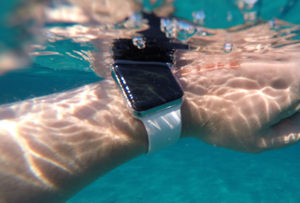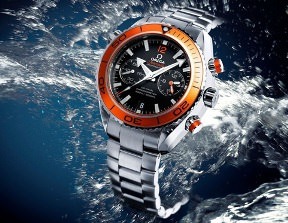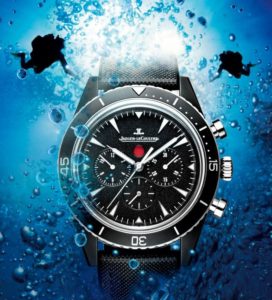One of the most common feature on any watch, no matter if it’s a multi-thousand dollar Rolex or a $10 timepiece from a department store, is water resistance.
Summer means people will be outdoors more, whether that’s taking a swim in a lake or getting caught in a thunderstorm while on an afternoon run. Some people don’t remove their watches for these activities, so it’s important to have some sort of water resistance. But just what does that term mean?
If a watch has a rating of 30-meter water resistance, manufacturers don’t necessarily mean you should immediately jump into the water wearing your watch and dive down 30 meters expecting there to be no problems.
Water resistance ratings are stipulated by the Organization for Standardization (ISO). There are two ratings: one for dive watches and one for all other timepieces. The non-dive watch standardization (ISO 22810) doesn’t specify an exact amount of water a watch can survive in, leaving a lot of discretion to the manufacturer.
Manufacturers do, however, suggest not taking watches into depth they’re not rated for, but rather that a watch rated for deep-sea diving should be able to handle some wetness from dropping it into the dishwater or getting caught in the rain.

WATER RESISTANCE CHART
3 ATM, 30m, 100ft
Suitable for everyday use. Will withstand accidental splashes but not suitable for swimming.
5 ATM, 50m, 165ft
Suitable for everyday use and bathing but not suitable for swimming.
10 ATM, 100m, 330ft
Suitable for everyday use and swimming and snorkelling but NOT suitable for high board diving or sub-aqua diving.
20 ATM, 200m, 660ft
Suitable for all high impact water sports and scuba diving at depths not requiring helium gas.
20 – 50 ATM, 200 – 500m
Suitable for all high impact water sports, scuba diving and saturation diving.
100 ATM, 1000m
Suitable for deep sea diving and intergalactic travels.
These ratings are for a watch in good condition, perfect gaskets, good case back threads, crown and tube gaskets in perfect working order. If you plan to get your watch near any water, it needs to be tested at least once a year to make sure the case is tight. Keep in mind that water is the biggest enemy of any watch, just a small amount of moisture inside the watch can do lots of damage to the delicate movement.
As a watchmaker for over 40 years, I tell EVERY customer that the best thing you can do to prolong the life of your favorite watch is to keep it as clean and dry as possible, Period!
Take a quick look at this blog post that I did a while back on what happens if your watch leaks.
Water in Rolex Watch: Will Water Damage My Rolex? How Do I Fix It?
Check my Web Site for more information about my Business: www.watchdoctor.biz



